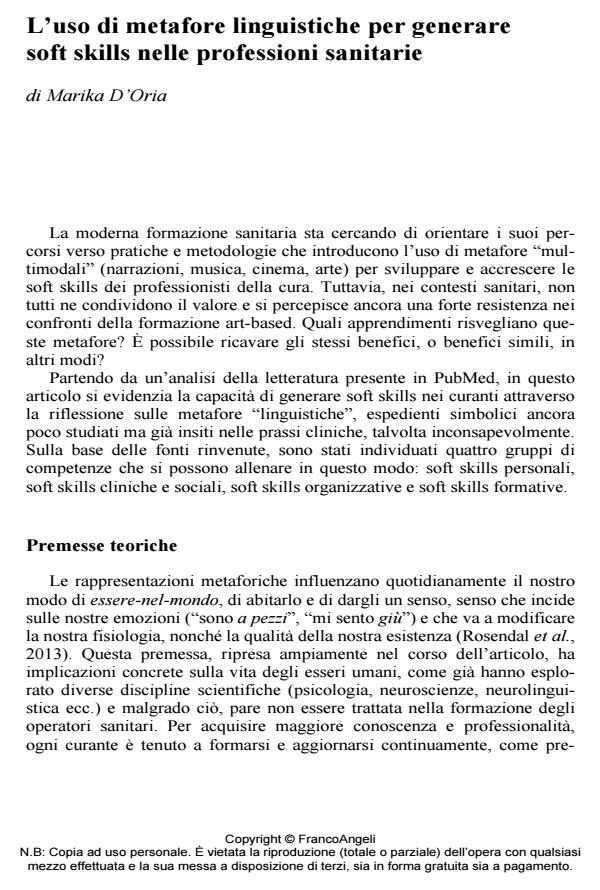The Use of Linguistic Metaphors to Create Soft Skills in Healthcare Professions
Journal title EDUCATIONAL REFLECTIVE PRACTICES
Author/s Marika D'Oria
Publishing Year 2016 Issue 2016/2
Language Italian Pages 17 P. 72-88 File size 227 KB
DOI 10.3280/ERP2016-002006
DOI is like a bar code for intellectual property: to have more infomation
click here
Below, you can see the article first page
If you want to buy this article in PDF format, you can do it, following the instructions to buy download credits

FrancoAngeli is member of Publishers International Linking Association, Inc (PILA), a not-for-profit association which run the CrossRef service enabling links to and from online scholarly content.
The modern medical education is trying to direct its path towards practices and methodologies that introduce the use of "multimodal metaphors" (narrations, music, cinema, art etc.) to develop and enhance the soft skills of healthcare professionals. However, in health care settings, this vision is not always accepted and there is a strong resistance to the art-based education. How to create these skills in other ways? Starting from the literature found in PubMed, this article analyses cases, experiences and research that highlight the ability to generate soft skills in healthcare professionals through the reflection on "linguistic metaphors", symbolic elements still little studied but already inherent in clinical practice, sometimes unconsciously. Based on the discovered sources, four groups of skills have been identified: personal soft skills, clinic and social soft skills, organizational soft skills and educative soft skills. The purpose is to promote greater consideration of these issues in the training of students as well as in the continuing education of physicians, and in health organizations
- Le metafore linguistiche nella formazione sanitaria. Il contributo della neuro-fenomenologia Marika D’Oria, in EXCELLENCE AND INNOVATION IN LEARNING AND TEACHING 1/2017 pp.33
DOI: 10.3280/EXI2017-001003
Marika D'Oria, L’uso di metafore linguistiche per generare soft skills nelle professioni sanitarie in "EDUCATIONAL REFLECTIVE PRACTICES" 2/2016, pp 72-88, DOI: 10.3280/ERP2016-002006